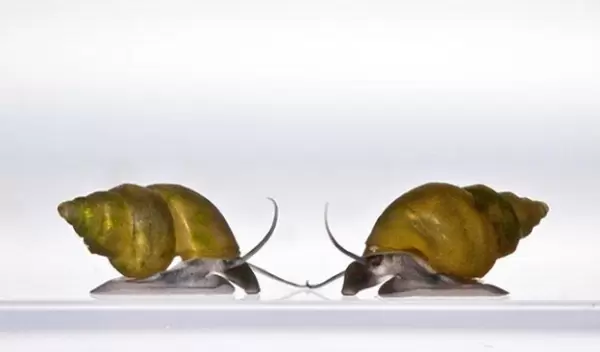
Invasive species' success may lie in living fast, dying young
For some species conquering new territory, it might be better to live fast and die young.
In a new study, biologists at the University of Iowa looked at why a type of freshwater snail that has invaded ecosystems worldwide has been so successful. Their conclusion: The lineages that were the most successful invaders matured and reproduced more quickly than noninvasive counterparts within the species.
The U.S. National Science Foundation-supported study was published in the journal Oecologia. "Humans are moving more and more species around the world, leading to an ever-increasing number of species invasions," says Sam Scheiner, a program director in NSF's Division of Environmental Biology. "Learning to control such invasions is more important than ever."
The freshwater mud snails studied by the researchers are native to New Zealand and have spread — likely beginning on commercial ships — to dominate numerous lake and river ecosystems in Asia, North America, Europe, and elsewhere.
The species are interesting to biologists because they reproduce both sexually and asexually — the latter where females reproduce without males by making genetic copies of themselves — and thus can be used to better understand the advantages and disadvantages of sexual reproduction.
The asexual snails have been the more successful invaders, despite having much lower genetic diversity than the sexual snails. The successful invaders also had slower growth rates — and were smaller in size — than the sexual snails, the researchers found. That combination would generally sink a species' ability to compete in a new setting.
"It's like these snails have this unusual constellation of traits that becomes almost ubiquitous in the invaders,” says Maurine Neiman, the study’s senior author. "That gets to the core question we're asking, 'What makes an invasive lineage invasive?'"
"I think the data suggest there seems to be a real advantage to this combination of slow growth rate and early reproductive maturity," Neiman continues. "Their generation times are faster, and they are likely to outcompete other snail lineages that mature more slowly."
In a lab, the researchers grew populations of snails originally collected in Belgium and in six locations across the United States. They examined the progeny for "life history traits," meaning the characteristics related to an organism's fitness or reproductive success that would allow them to thrive in a new environment.
While it's the success strategy for one invasive species, the biologists think it may show that life history traits could be fundamental to whether and how other species root themselves in new settings.
"A lot of invasive species research focuses on prevention measures. We have so many invasive species, once they're there and established, it's harder to get rid of them," Neiman says. "If we can find some way to predict what would be good invasive species, we could implement prevention measures."


